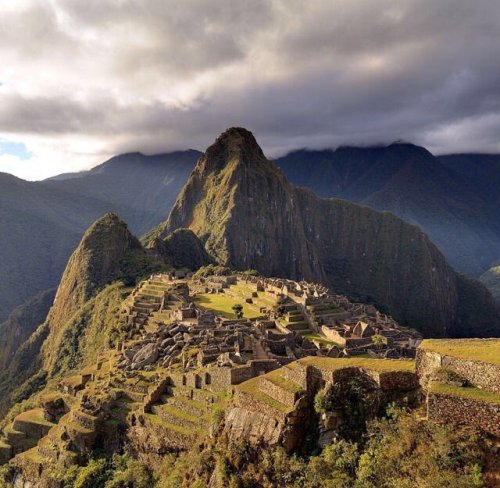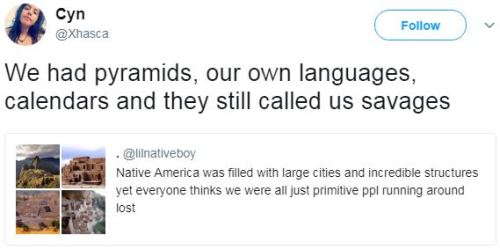red-gyarados: sindri42: crazy-middle-class-asian: biggest-gaudiest-patronuses: biggest-gaudiest-patr
red-gyarados:sindri42:crazy-middle-class-asian:biggest-gaudiest-patronuses:biggest-gaudiest-patronuses:robotsandfrippary:99laundry:gogomrbrown:I learned in a Latin Studies class (with a chill white dude professor) that when the Europeans first saw Aztec cities they were stunned by the grid. The Aztecs had city planning and that there was no rational lay out to European cities at the time. No organization.When the Spanish first arrived in Tenochtitlan (now downtown mexico city) they thought they were dreaming. They had arrived from incredibly unsanitary medieval Europe to a city five times the size of that century’s london with a working sewage system, artificial “floating gardens” (chinampas), a grid system, and aqueducts providing fresh water. Which wasn’t even for drinking! Water from the aqueducts was used for washing and bathing- they preferred using nearby mountain springs for drinking. Hygiene was a huge part if their culture, most people bathed twice a day while the king bathed at least four times a day. Located on an island in the middle of a lake, they used advanced causeways to allow access to the mainland that could be cut off to let canoes through or to defend the city. The Spanish saw their buildings and towers and thought they were rising out of the water. The city was one of the most advanced societies at the time. Anyone who thinks that Native Americans were the savages instead of the filthy, disease ridden colonizers who appeared on their land is a damn fool.They’ve also recently discovered a lost Native American city in Kansas called Etzanoa It rivals the size of Cahokia, which was very large as well.here are some reconstructions of Tenochtitlan just a note, we don’t think of old european cities as ruins, because those civilizations continued and kept building over the old–there are no abandoned ruins for us to visit & photograph. when we picture those old cities, we have only mental images drawn from our own assumptions & prejudices–images that tend to glorify ‘civilized’ europe.since victors write history, our image of native american cities was created by colonizers motivated to uphold the ‘native savage’ myth. when we think of these civilizations now, we think of ‘uncivilized’ (rough, broken, abandoned) ruins, because that’s what remains. ruins are the only thing left. because of the destruction wrought by western invaders, these civilizations never had a chance to continue building. they were destroyed, and all we have left is an unimaginative shadow of their former glory. went to peru and visited some of their museums and learned inca history that american schools don’t teach you. basically you know why they were beaten out by the spanish invaders? because incas were mostly scientists and not warriors. they had advanced medicine, farming and science technology. THATS what they were good at - tech - not building weapons to most efficiently kill people. the spanish were good at that. so they won. basically the real savages and thugs won and murdered a bunch of scientists, and their technology and advancements are lost forever. it took into the 20th century for colonizer technology to advance in the field of medicine and agriculture to the level of the incas. colonizers literally set human knowledge back like 500 years. Weapons technology was a lot less important than accidental spread of disease. Because you know what the Americas just didn’t have? Plagues. A plague is not something that evolves properly; germs need proper living hosts to grow and multiply, so killing off your hosts is a terrible strategy. Any bacterium or virus or parasite which originally developed to infest humanity is going to be mostly non-lethal, taking out only the oldest and weakest of humans and leaving the healthy, especially those at or below reproductive age, alive. A plague happens when a disease crosses over between species, when you have a germ that developed to infest like, cows or something, that ends up inside a human and does waaay more damage than its supposed to because a human is so much weaker than a cow. Plagues didn’t develop in the Americas because they just… didn’t domesticate animals. They didn’t have many of the kinds of animals that take well to domesticity, to start with. You can’t really farm buffallo in the same way you can with cows, and they didn’t have horses until colonials brought them over.So, they weren’t living in close confined with huge numbers of animals, so the diseases didn’t cross over, so there were no serious plagues. Which means the people there had no resistance to plagues introduced from outside. Sure a really terrible disease in europe could kill like one in ten people, but that’s because everybody had grown up in a place where this kind of thing happened, so they were resistant. That same disease, loosed on the Americas, would depopulate whole civilizations. It was apocalyptic. The first explorer ships would infect a few members of one tribe, and it would spread like a wildfire, and by the time the next group of explorers or settlers came by in a couple decades and whole tribes would just be missing. The deliberate acts of genocide that came later were almost irrelevant in the final analysis, because the damage inflicted by guns and swords and spears is tiny compared to the damage that was done blindly by just exposing two unconnected peoples to each other without proper quarantine procedures.You look through the journals of those early colonists and they talk about shit like how this forest is so beautiful, it looks like it was arranged as a park, truly this land is blessed and this is a sign that God favors the colony… and then historians look back on that today and it was literally a park, carefully arranged and cultivated by a local population that vanished sometime between when the first ships arrived and when that journal was written.The entirety of modern american civilization is built upon post-apocalyptic ruins.All great info! -- source link
Tumblr Blog : gogomrbrown.tumblr.com
#history



